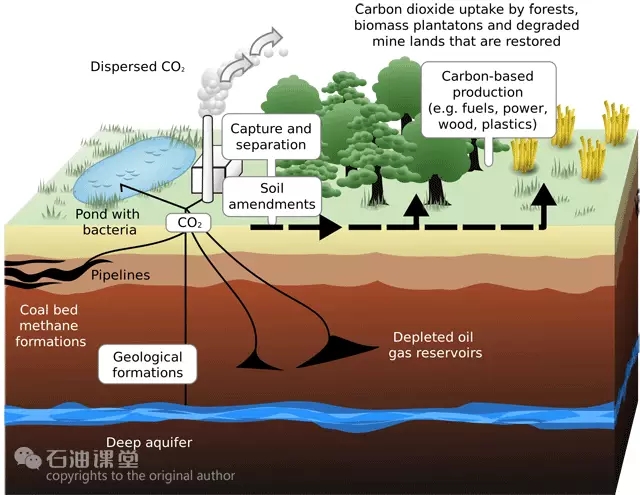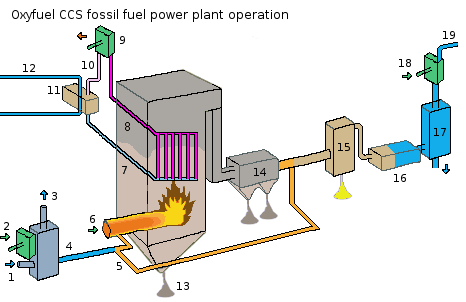CCUS
sidenav header backgroundCCUS -- Carbon Capture, Utilization and Storage
The climate change challenge
"It is extremely likely that human influence has been the dominant cause of the observed global warming since the mid-20th century," the Intergovernmental Panel on Climate Change (IPCC) Fifth Assessment Report concluded in 2013. The largest human influence has been the emission of greenhouse gases such as carbon dioxide, methane, and nitrous oxide.
The level of carbon dioxide (CO2) released into the atmosphere has increased significantly, unless we do something to reduce the amount of the greenhouse gas entering the atmosphere, the world will experience the fierce effects of climate change.
We have at least three ways to reduce CO2 emission, 1) adoption of alternative energy sources, 2) energy efficient systems, and 3) Carbon capture, utilization and storage. Therefore, regardless of the deployment of clean and efficient energy solutions, CCUS technologies need to be implemented.
What is CCUS
Carbon capture, utilization and storage (CCUS) is a process that captures CO2 emissions from large point sources, such as fossil fuel power plants, iron and steel manufactures, cement plants and other industrial sources, followed by recycling the CO2 for utilization, and transporting it to a storage site, and depositing it where it will not enter the atmosphere, normally an underground geological formation.
CCUS is a potential means of mitigating the contribution of fossil fuel emissions to global warming, which applied to a modern conventional power plant could reduce CO2 emissions to the atmosphere by approximately 80–90% compared to a plant without CCUS. The IPCC estimates that the economic potential of CCUS could be between 10% and 55% of the total carbon mitigation effort until year 2100.
Capturing and compressing CO2 may increase the energy needs and applying the technology to existing plants would be more expensive, especially if they are far from a sequestration site. A 2005 industry report suggests that with successful research, development and deployment, sequestered coal-based electricity generation in 2025 may cost less than un-sequestered coal-based electricity generation today.

Capture
Broadly, three different configurations of technologies for capture exist: pre-combustion, post-combustion, and oxyfuel combustion.
- Pre-combustion
The fossil fuel is partially oxidized, for instance in a gasifier. The resulting syngas (CO and H2) is shifted into CO2 and H2. The resulting CO2 can be captured from a relatively pure exhaust stream. The H2 can now be used as fuel; the carbon dioxide is removed before combustion takes place.
CH4+ H2O ---à CO + 3H2
CO + H2O ---à CO2 + H2
- Post-combustion
Post-combustion processes separate CO2 from combustion exhaust gases. CO2 can be captured using a liquid solvent or other separation methods. In an absorption-based approach, once absorbed by the solvent, the CO2 is released by heating to form a high purity CO2 stream.
- Oxyfuel-Combustion
The fuel is burned in oxygen instead of air. To limit the resulting flame temperatures to levels common during conventional combustion, cooled flue gas is recirculated and injected into the combustion chamber. The flue gas consists of mainly carbon dioxide and water vapor, the latter of which is condensed through cooling. The result is an almost pure carbon dioxide stream that can be transported to the sequestration site and stored.

1= air inlet, 2= mechanical energy is supplied, 3= nitrogen outlet, 4= oxygen outlet, 5= recycled exhaust gas inlet, 6= fuel/coal inlet, 7= cold water pipe, 8= steam inlet pipe, 9= steam turbine, 10= steam outlet pipe, 11= steam condenser, 12= cooling pipe of steam condenser, 13= bottom ash, 14= fly-ash removal, 15= sulphur + gypsum removal, 16= cooler, 17= water condenser (water removal), 18= mechanical energy is supplied (CO2-compressor), 19= CO2 outlet.
Storage
A general problem is that long term predictions about submarine or underground storage security are very difficult and uncertain, and there is still the risk that CO2 might leak into the atmosphere.
Carbon capture has been clearly demonstrated at pilot scale and in a number of industrial processes at large-scale for many years. The application of capture technologies to large-scale power projects is now a reality. The technology already works, but more research is required to reduce the cost and energy penalties for the next generation of capture technologies.
(Source: Wikipedia)







